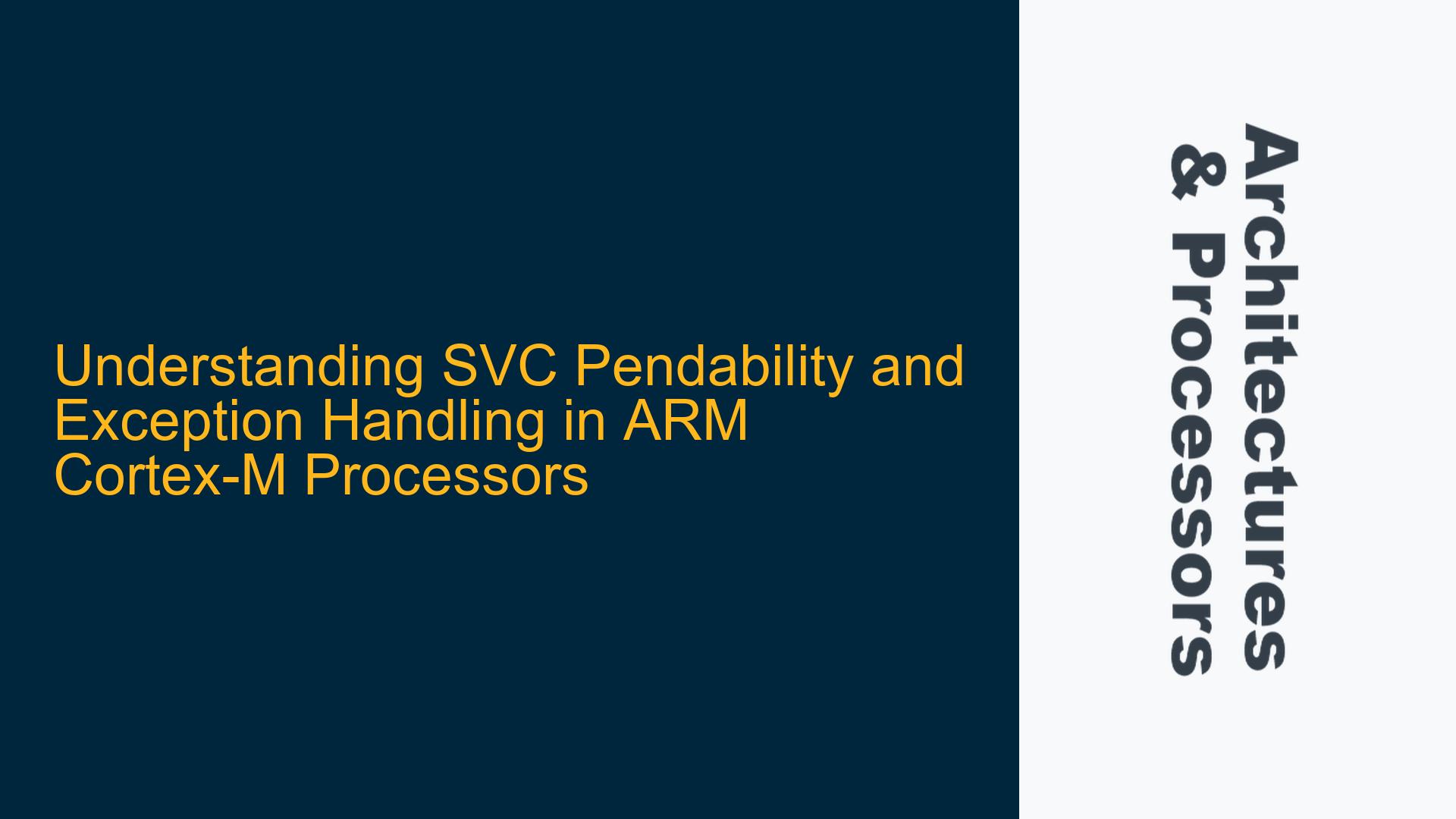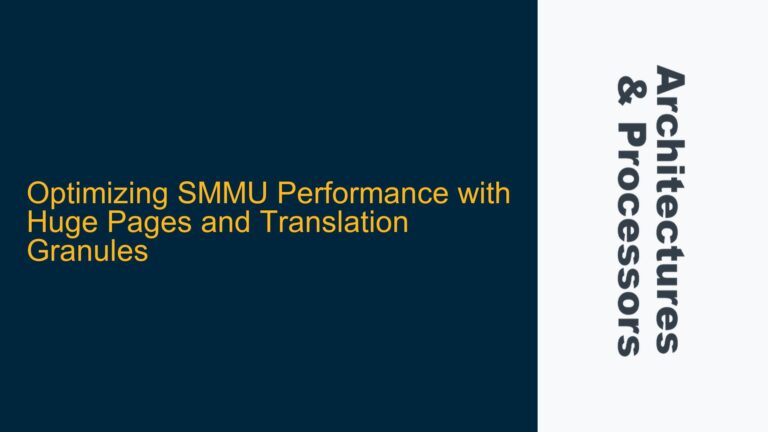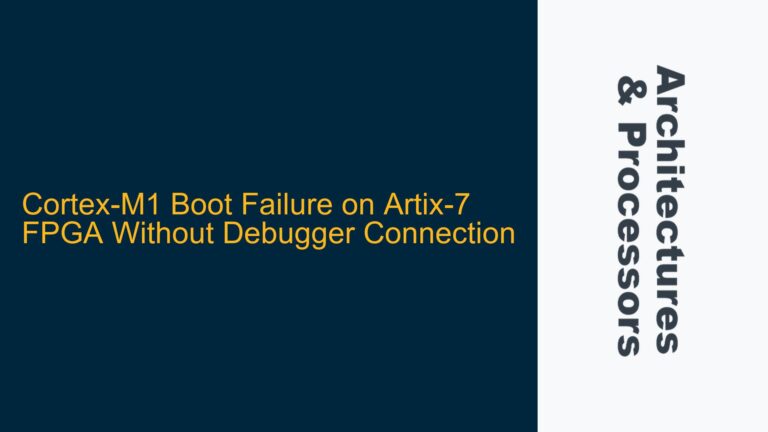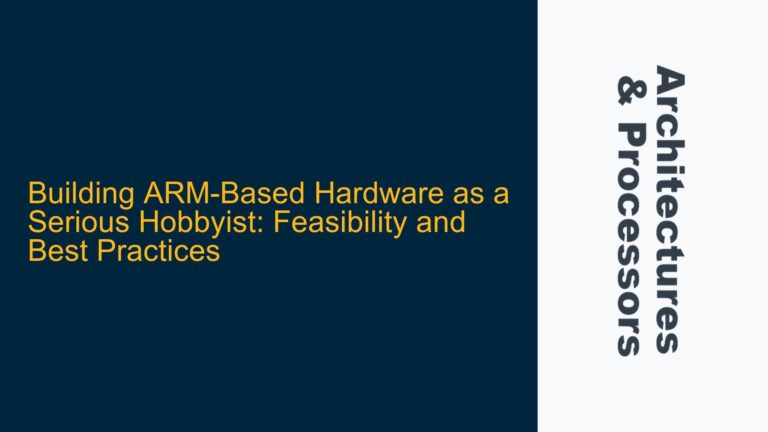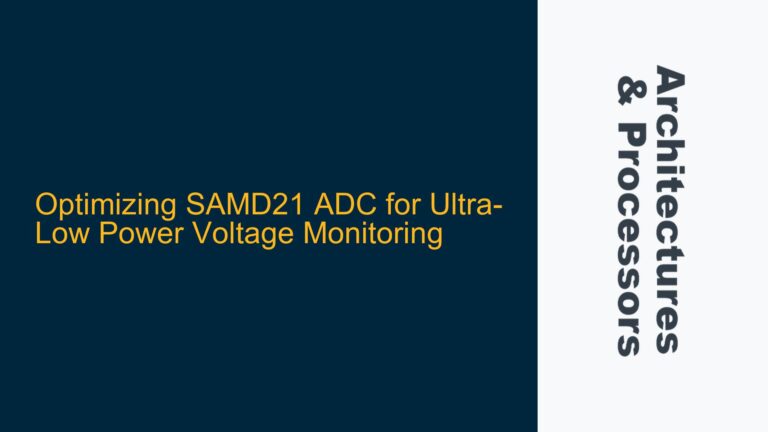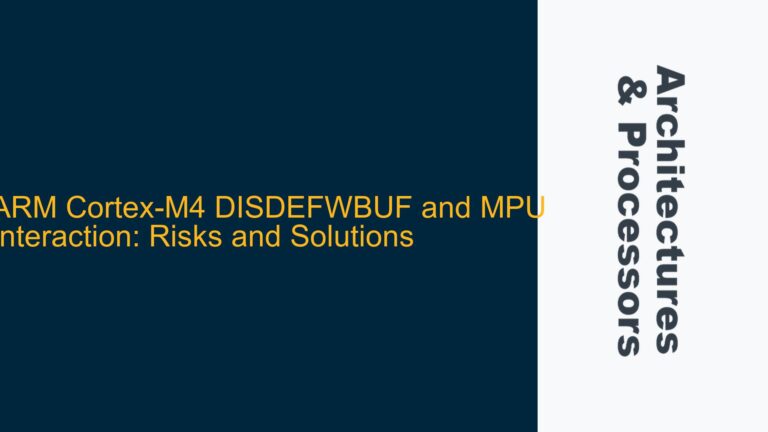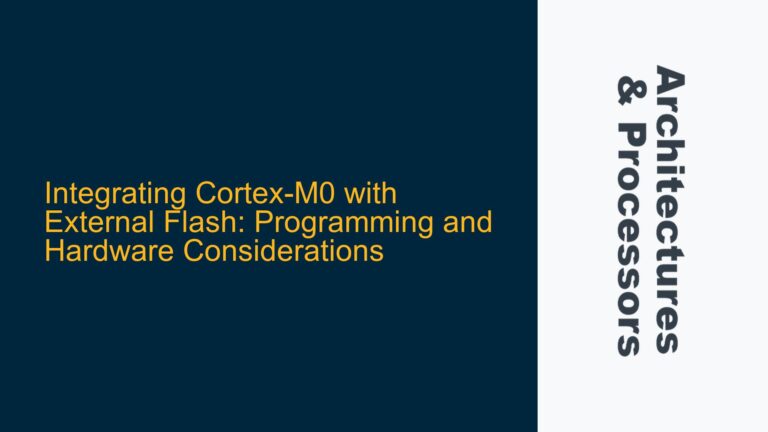SVC Pendability and Exception Entry Behavior in ARM Cortex-M
The SuperVisor Call (SVC) exception in ARM Cortex-M processors is a critical mechanism for implementing system calls and transitioning between privilege levels. However, its behavior during exception entry and handling can be nuanced, particularly when higher-priority interrupts preempt the SVC exception. The ARMv7-M architecture defines specific rules for how SVC exceptions are pended, prioritized, and handled, which can lead to confusion if not thoroughly understood.
When an SVC instruction is executed, the processor initiates the exception entry sequence. However, if a higher-priority interrupt arrives during this sequence, the SVC exception can be pended. This behavior is controlled by the System Handler Control and State Register (SHCSR), specifically the SVCALLPENDED bit. The SVCALLPENDED bit indicates that an SVC exception is pending and waiting to be serviced. This mechanism ensures that higher-priority interrupts are serviced first, maintaining the real-time responsiveness of the system.
The key challenge arises from the interaction between the SVC exception and other exceptions or interrupts. The ARMv7-M architecture employs a priority-based preemption model, where exceptions with higher priority can preempt those with lower priority. This includes the SVC exception, which can be preempted by higher-priority interrupts during its exception entry sequence. When this occurs, the SVC exception is pended, and its handling is deferred until the higher-priority interrupt is serviced.
The stacked return address (Program Counter, or PC) during this process is also a point of interest. When an SVC instruction is executed, the return address pushed onto the stack corresponds to the instruction immediately following the SVC instruction. This is consistent with the behavior of other exceptions and interrupts in the Cortex-M architecture. However, if a higher-priority interrupt preempts the SVC exception, the stacked return address remains the same, as the stack frame for the higher-priority interrupt reuses the same context.
Priority Escalation and SVC Pendability Mechanisms
The ARM Cortex-M architecture employs a priority escalation mechanism to manage exception handling. This mechanism ensures that exceptions with higher priority are serviced before those with lower priority. However, this can lead to scenarios where the SVC exception is pended due to priority conflicts. The SHCSR register’s SVCALLPENDED bit plays a crucial role in this process, as it indicates whether an SVC exception is pending.
The priority escalation mechanism is particularly relevant when the group priority of a pending SVC exception is lower than or equal to the currently executing priority. In such cases, the SVC exception is inhibited from preempting the current execution context. This behavior applies to all synchronous exceptions, including faults and SVCalls. As a result, the SVC exception remains pended until the higher-priority interrupt is serviced and the processor checks for pending exceptions.
The SVCALLPENDED bit is not the only mechanism involved in SVC pendability. The processor’s hardware also checks the pending status of all exceptions when exiting from a higher-priority interrupt. This ensures that any pended exceptions, including SVC, are serviced in the correct order based on their priority. If the SVC exception has sufficient priority, it will be tail-chained into the exception handling sequence.
A critical consideration is the ability to cancel a pending SVC exception. This capability is particularly useful in debug scenarios, where a developer may need to manually change the Program Counter (PC) after single-stepping over an SVC instruction. In such cases, the debugger can clear the SVCALLPENDED bit to cancel the pending SVC exception. This ensures that the SVC handler is not invoked, allowing the debugger to maintain control over the execution flow.
Debugging and Resolving SVC Pendability Issues
When dealing with SVC pendability issues, it is essential to understand the interaction between the SVC exception and other exceptions or interrupts. The first step in troubleshooting is to verify the configuration of the SHCSR register, particularly the SVCALLPENDED bit. This bit should be set when an SVC exception is pended and cleared when the exception is serviced or canceled.
If the SVC exception is not being serviced as expected, the next step is to examine the priority configuration of the exceptions and interrupts in the system. The NVIC (Nested Vectored Interrupt Controller) priority settings should be reviewed to ensure that the SVC exception has the appropriate priority relative to other exceptions and interrupts. Misconfigured priorities can lead to scenarios where the SVC exception is indefinitely pended or preempted by lower-priority interrupts.
Another common issue is the improper handling of the stacked return address during exception entry. Developers should ensure that the return address pushed onto the stack corresponds to the instruction following the SVC instruction. This is particularly important when higher-priority interrupts preempt the SVC exception, as the stacked return address must remain consistent for correct exception handling.
In debug scenarios, the ability to cancel a pending SVC exception is a valuable tool. Developers should be familiar with the process of manually clearing the SVCALLPENDED bit to cancel a pending SVC exception. This can be achieved using a debugger to modify the SHCSR register directly. Additionally, developers should ensure that the debugger is configured to handle SVC exceptions correctly, particularly when single-stepping through code that contains SVC instructions.
Finally, it is crucial to thoroughly test the exception handling logic in the system. This includes verifying the behavior of the SVC exception under various conditions, such as when it is preempted by higher-priority interrupts or when it is pended due to priority escalation. Automated tests and simulation tools can be invaluable in identifying and resolving issues related to SVC pendability.
By understanding the mechanisms behind SVC pendability and following a systematic approach to troubleshooting, developers can ensure that their ARM Cortex-M systems handle SVC exceptions reliably and efficiently. This not only improves the robustness of the system but also simplifies the debugging process, reducing the time and effort required to resolve issues.
